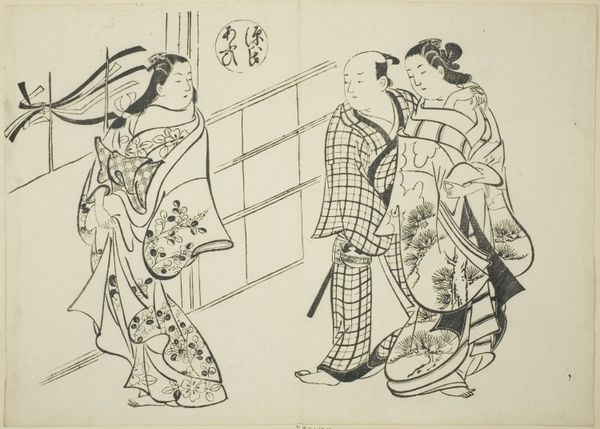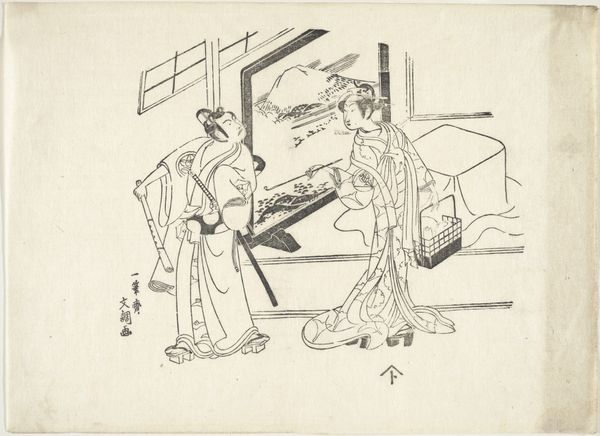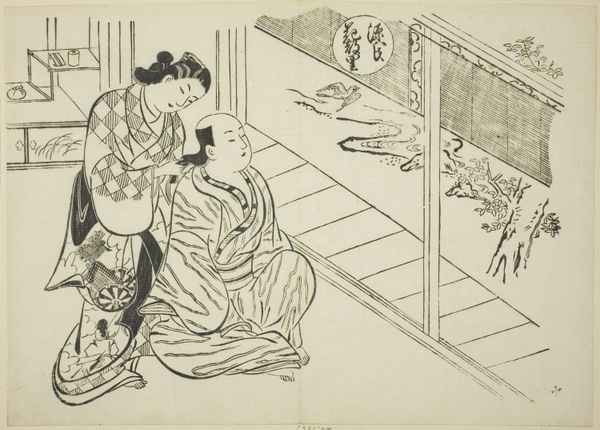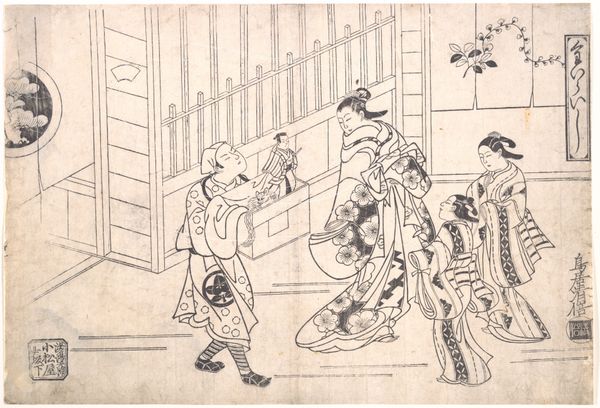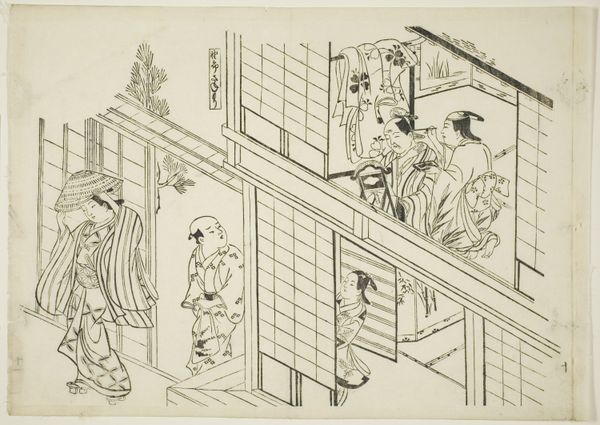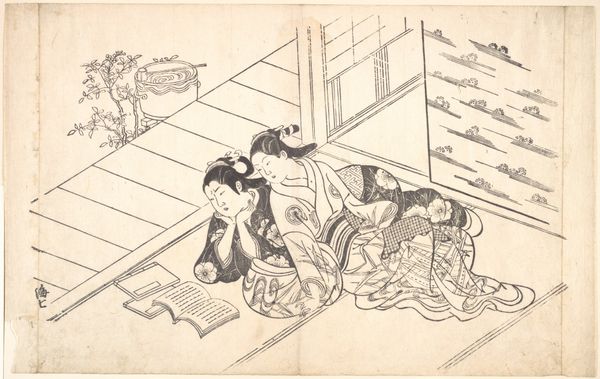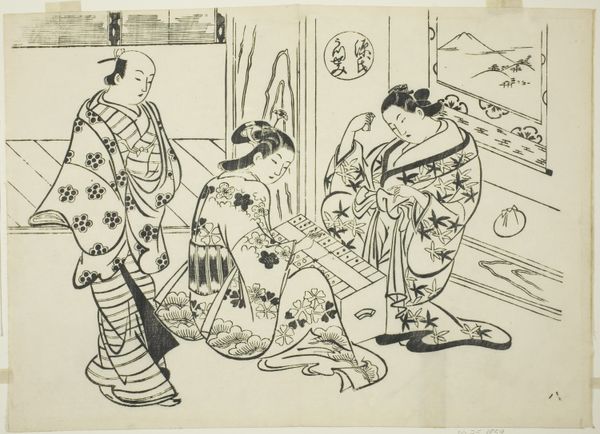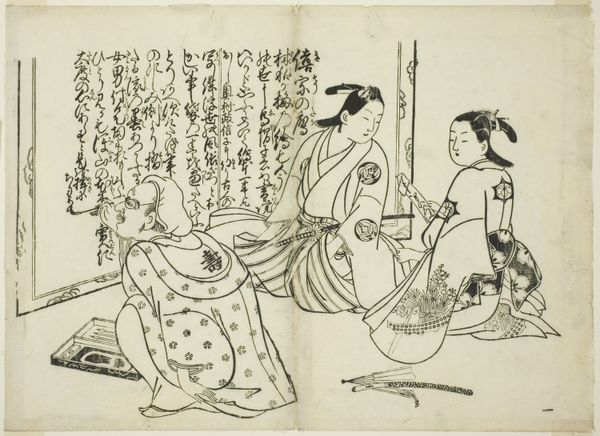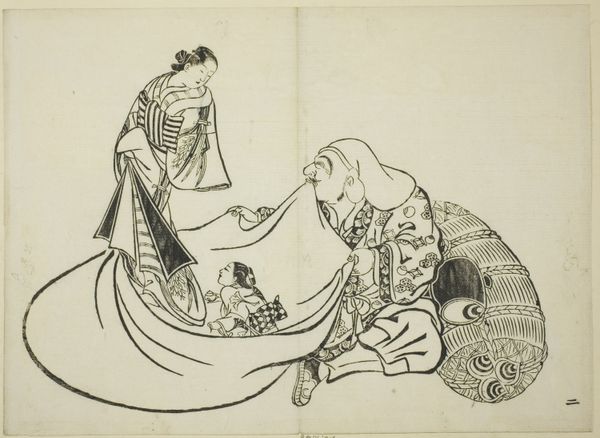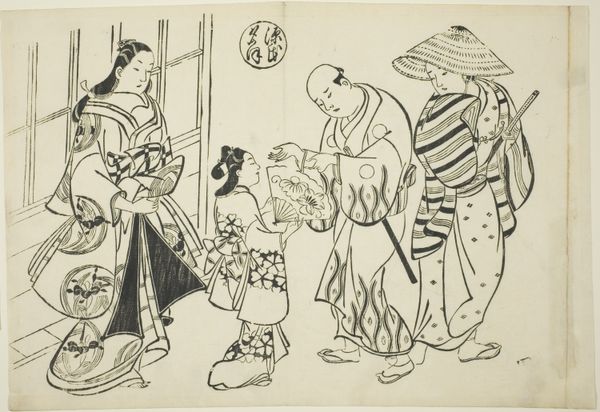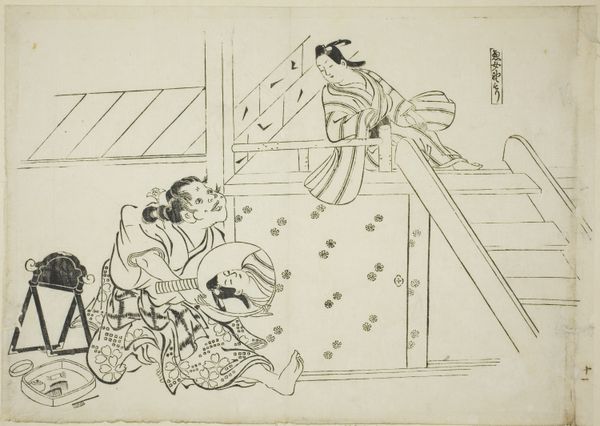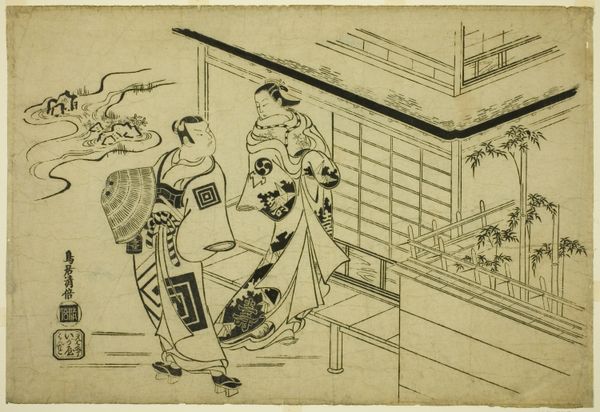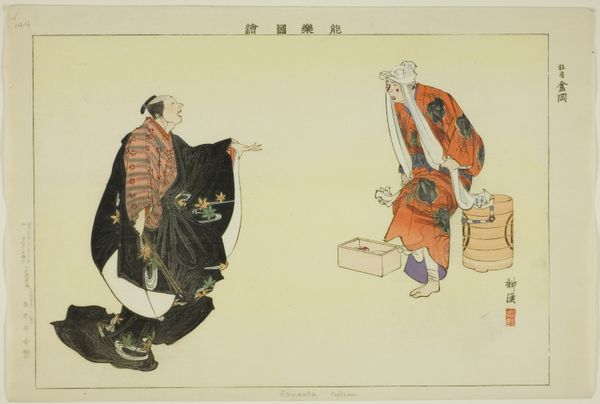
Comb Rashomon (Sashigushi Rashomon), no. 3 from a series of 12 prints depicting parodies of plays c. 1716s - 1726s
0:00
0:00
print, woodblock-print
# print
#
asian-art
#
ukiyo-e
#
figuration
#
woodblock-print
Dimensions: 27.2 × 38.6 cm
Copyright: Public Domain
Curator: Our next artwork, circa 1716 to 1726, comes to us from Okumura Masanobu. It’s a woodblock print entitled *Comb Rashomon (Sashigushi Rashomon), no. 3 from a series of 12 prints depicting parodies of plays*, and it now resides here at the Art Institute of Chicago. Editor: The striking simplicity of this work, with its monochromatic palette and emphasis on line, lends it an air of quiet intimacy, wouldn't you agree? The balance achieved with just a few design elements. It really has such immediacy to it. Curator: I would concur, especially noting that Masanobu often employed humor by adapting imagery of traditional plays to apply to contemporary events or popular culture of Edo-era Japan. Look closely, and you can spot a visual pun or clever double entendre relating to these stories in this image! Editor: The composition immediately divides itself vertically into background and foreground. But these also set a structural tension with how the artist balances positive and negative space, creating almost a dialog between density and sparseness. What's the cultural relevance in terms of social customs? Curator: Indeed. Beyond its technical elements, the practice of tending to hair with a comb symbolizes not only grooming but intimacy. It speaks to female roles in Edo-era society. Often this imagery evokes courtesans. A narrative about beautification or maybe about private ritual or maybe a power dynamic... It speaks to something archetypal and enduring, you know? Editor: And the graphic boldness in Masanobu's linework heightens the immediacy for the modern viewer! The patterned kimono practically vibrates against the simpler backdrop and reinforces not only the pictorial depth of the composition but its layered content as well. Curator: What stays with me is this suggestion of daily life layered with hidden allusions to literature, theater, or popular beliefs… The symbols present evoke larger networks of meaning—it's much more than meets the eye at first glance. Editor: And, despite the small scale and sparseness of materials, its lasting impression resides precisely in that tension between visual impact and intimate social context. What else could you ask for?
Comments
No comments
Be the first to comment and join the conversation on the ultimate creative platform.
